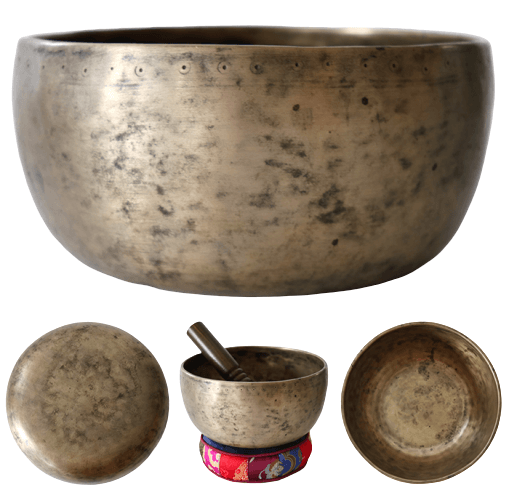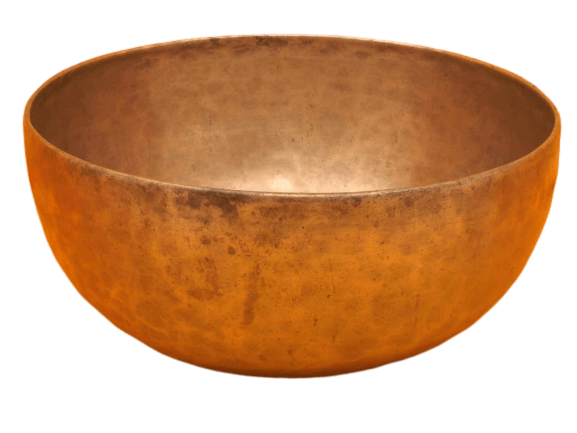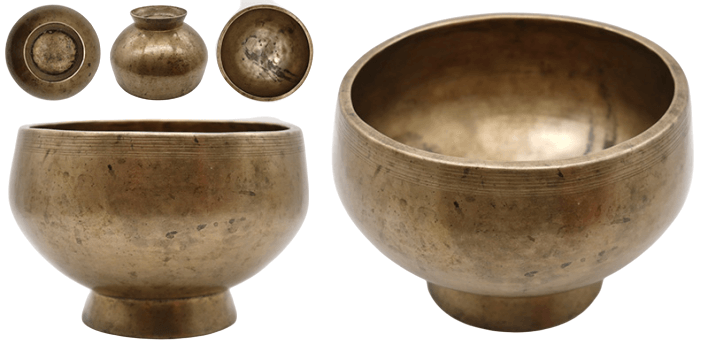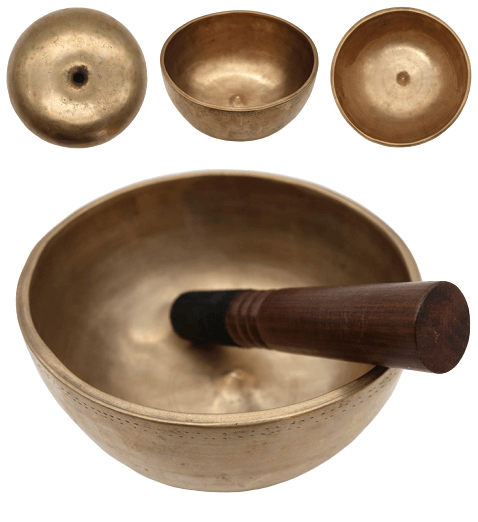Types of Singing Bowl
Singing bowls are the aesthetic handmade singing bowls, which helps for healing physical, mental, and spiritual stability. Some researchers have identified that there are almost 50 types of singing bowl. However, out of these 50 types of antique singing bowls, only seven or eight types of basic singing bowls are popular. Each of the Singing bowls is distinguished by their unique characteristic shape and sound. Each part of the singing bowl is handcrafted and the types of singing bowl are different therefore they can be a little expensive
Some machine-made singing bowls are also emerging out in the market and they are a little cheaper than handmade singing bowls. Some bowls authorities have assigned their names for the singing bowls. Here are some of the major types of singing bowl:
Thadobati Tibetan singing bowls

They are one of the oldest types of the singing bowl with a mark of dating back to at least 15th century. Thadobati Tibetan singing bowls are numerous and are not that expensive in comparison to other types of the singing bowl. As they are not so expensive, so they are the priority of buyers. However, the quality of the thadobati singing bowl varies considerably.
Thadobati singing bowls are defined as having almost straight high-sided walls with a wide flat bottom. Their diameter is little less than the rim. Walls can both be thick or thin, but they are seldom graduated. Heavy bowls often have wider and thicker lips whereas the lip is usually plain in small and medium type singing bowls. The outer wall of thadobati singing bowls has a decorative fringe of sun motifs arranged as downward-facing triangles. Their price ranges from £50- £750. They weigh around 1.25 kg.
Jambati Tibetan singing bowl

Jambati Tibetan singing bowls are the largest and heaviest type of singing bowls. They are arguably the most beautiful bowls. Quite high and gracefully curved walls characterize this beautiful singing bowl. In some jambati singing bowls, the lip is merely the sheared top of the wall and does not turn inward. As they are very large in shape and size, so they need almost 3 or 4 highly skilled craftsmen to make them.
Jambati singing bowls are handcrafted so they always have attractive hammer markings arising from the forging process. Most of the jambati singing bowls are recorded from the 17th century. They have a small flat bottom and a wide plain. Jambati singing bowls are capable to produce very enriching and wonderfully low sound with a long sustain. Medium size of jambati singing bowls can be held into our hands and be played but the larger ones are kind of heavy so they are played by resting the bowl in a mat or a cushion as they can’t be held in our hand.
To play this bowl, one should be very skilled because they are a little complex than other types of the singing bowl. Apart from producing music, a very large type of jambati singing bowl is also used to store grains. Their price varies from £400- £5500. They are usually of 1kg – 6.5kg.
Naga pedestal singing bowls

Naga pedestal singing bowls are forged into two parts: the bowl itself and a circular metal band upon which the bowl is permanently mounted. The bowl is kind of mounted and cannot stand without the support of the metal band. The lip of the Naga singing bowls are usually plain but maybe grooved on thicker and heavier bowls. Their walls are usually plain. They give a very good response and a sonorous sound when played.
Naga singing bowls are played around its rim rather than struck. They are very easy to play in comparison to other bowls. The notes from Naga bowls are quite often of concert pitch. Its portable size attracts the buyer. This can easily be transported from one place to another with great ease. Naga bowls have a diameter of 5cm – 20 cm and a height of 10cm – 25 cm. Their price ranges from £100- £800.
Mani singing bowls

Mani singing bowls are distinguished by their strong physical presence, a powerful voice that they produce, and a healing sound. They have a unique and unusual sound and their shape and size hardly vary from one type to another. They are heavy flat-bottomed bowls with conical walls with lips wider and inward facing. The sound produced by Mani singing bowls is very distinctive.
The decoration of Mani singing bowls are limited to a grooved lip, small concentric circles, and few bands of incised lines. Their walls are smooth inside and out. Some of the Mani singing bowls can be slow to get going but most of them are easy to play. To add more beauty to these bowls, the walls of Mani bowls are tapped. The diameter of the bowl is around 4-9 inches and the height of the bowl ranges from 2-5 inches. The price of Mani singing bowls is approximately £800.
Lingam Tibetan singing bowl

Lingam Tibetan singing bowls are the rarest of all types of singing bowls. They are one of the oldest types with some dating back to at least 16th century. They are used to produce music and to heal disorders of the body. The lingam Tibetan singing bowls produce a pure type of sound. They come in a wide variety of shapes and sizes but they usually have a low framed profile. The smallest size of the lingam Tibetan singing bowl is around 4 cm. They are used in ceremonies to welcome mysticism and fortune.
The basic shape of the lingam-singing bowl is very low shallowed with a protrusion in the center of the bowl. They have a bold lip with flat bottom naval. The sound produced from them is very special, sweet, and sonorous. They have massive aesthetic appeal and they are very difficult to find in the market. As they are rare, their price is always rocketed in the market. Their price ranges from £600- £5000. Lingams are always decorated with few decorative lines just below the rim on the outer wall. Few of them have a fountain ability.
The shape and size of the bowls contribute much to the quality and are chosen for attraction. There are so many types of singing bowls but the above-mentioned are the most popular and advanced types of singing bowls.
